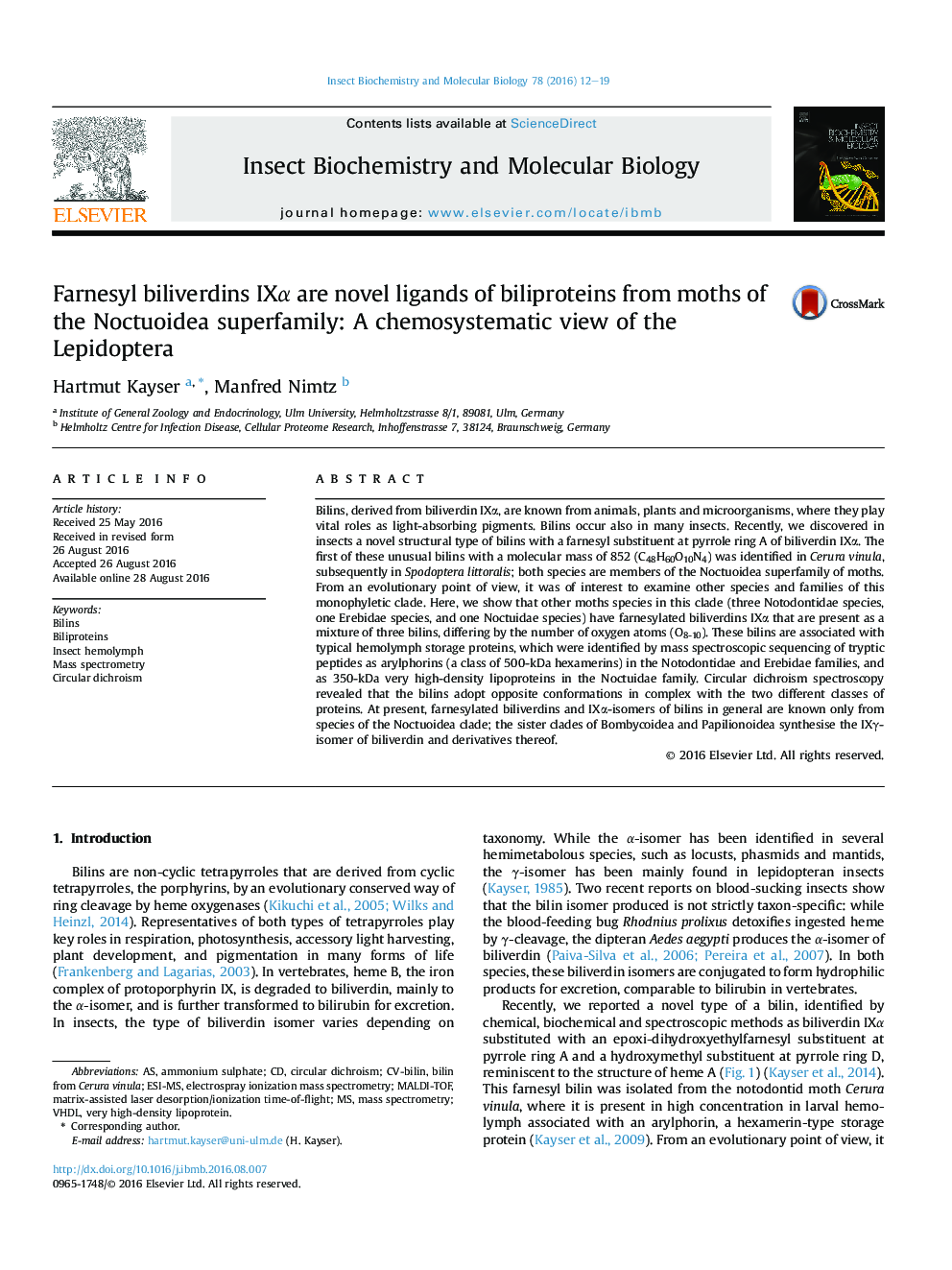| Article ID | Journal | Published Year | Pages | File Type |
|---|---|---|---|---|
| 1981918 | Insect Biochemistry and Molecular Biology | 2016 | 8 Pages |
•The bilins and associated proteins in hemolymph from Noctuoidea moths were studied.•Three biliverdins IXα with a farnesyl substituent were identified in three families.•The bilin binding proteins were arylphorins and very high-density lipoproteins.•Farnesyl bilins may be a chemical feature of the monophyletic Noctuoidea superfamily.
Bilins, derived from biliverdin IXα, are known from animals, plants and microorganisms, where they play vital roles as light-absorbing pigments. Bilins occur also in many insects. Recently, we discovered in insects a novel structural type of bilins with a farnesyl substituent at pyrrole ring A of biliverdin IXα. The first of these unusual bilins with a molecular mass of 852 (C48H60O10N4) was identified in Cerura vinula, subsequently in Spodoptera littoralis; both species are members of the Noctuoidea superfamily of moths. From an evolutionary point of view, it was of interest to examine other species and families of this monophyletic clade. Here, we show that other moths species in this clade (three Notodontidae species, one Erebidae species, and one Noctuidae species) have farnesylated biliverdins IXα that are present as a mixture of three bilins, differing by the number of oxygen atoms (O8-10). These bilins are associated with typical hemolymph storage proteins, which were identified by mass spectroscopic sequencing of tryptic peptides as arylphorins (a class of 500-kDa hexamerins) in the Notodontidae and Erebidae families, and as 350-kDa very high-density lipoproteins in the Noctuidae family. Circular dichroism spectroscopy revealed that the bilins adopt opposite conformations in complex with the two different classes of proteins. At present, farnesylated biliverdins and IXα-isomers of bilins in general are known only from species of the Noctuoidea clade; the sister clades of Bombycoidea and Papilionoidea synthesise the IXγ-isomer of biliverdin and derivatives thereof.
Graphical abstractFigure optionsDownload full-size imageDownload high-quality image (265 K)Download as PowerPoint slide
